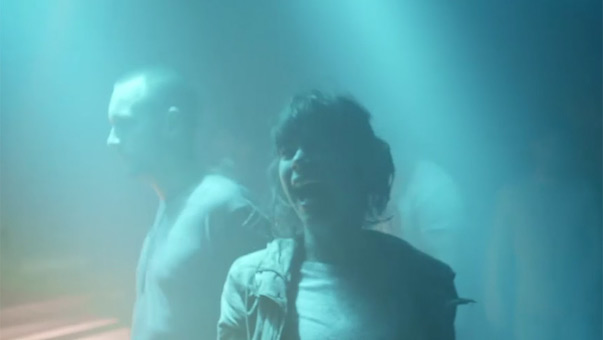During the early hours of the morning in a Berlin nightclub, Spanish Victoria (Laia Costa) meets a drunken quartet of Germans: Sonne (Frederick Lau), Boxer (Franz Rogowski); Blinker (Burak Yigit) and birthday boy Fuss (Max Mauff). An instant connection ignites between Victoria and Sonne and he charms her into coming with them for a drink. As relationships form, Boxer receives a call about a non-financial debt that needs paying immediately. This thrusts the group into the murkiest corner of the city, leaving the audience wondering if they will emerge alive.
Shot in a single take, Sebastian Schipper’s innovative VICTORIA (2015) is able to fuse film with theatre and is technically breath-taking. Cinematographer Sturla Brandth Grøvlen is rewarded for the enduring effort of shooting the performance in a single take by getting the first credit at the end of the film. The camera becomes part of the choreography: following the characters, catching every emotion; climbing up and down stairs; navigating between sweating club dancers on a packed dance floor; riding in lifts; ascending steps of a roof access hatch; and amazingly, slipping into a car. What’s surprising about this handheld camera is the way it is only noticeable in the opening five to ten minutes; then as the story emerges, the camera goes unnoticed and is no longer part of the story.
The camera becomes part of the choreography: following the characters, catching every emotion…
By using the one-take method and adopting the methods of theatre, there are numerous hazards to avoid. It is not until the film ends that you admire the complexity that the production must have undertook. Schipper has taken the film and surpassed traditional theatre, which is often set in one location; in VICTORIA, there are dozens of location changes and transitional hurdles to overcome. It is more inclined to the experimental theatre produced by the theatrical company Punchdrunk. They remove the limitations of the stage, just like Schipper has removed the limitations of finding the perfect shot by forgoing take after take, and instead opting for immediacy and reality.
There are comparisons with Woody Harrelson’s LOST IN LONDON (2017), that also uses the single take to deliver the story; another could be Alejandro Gonzalez Inarritu’s BIRDMAN (2014), which feels like a single take, although it is just cleverly edited. On a smaller scale is Robert Altman’s THE PLAYER (1992), with its opening scene lasting eight minutes without a cut: as Fred Ward, playing Walter Stuckel, says, “I hate all these cuts, cut, cut.” At the time, that opening scene felt fresh and daring. Schipper has taken it to another level.
Schipper has removed the limitations of finding the perfect shot by forgoing take after take, and instead opting for immediacy and reality.
For all VICTORIA’s creativity and revolutionary techniques, the highlight is still the script by Schipper, Olivia Neergaard-Holm and Eike Frederik Schulz. Tensely plotted, it forces the audience to forget the gigantic task of producing this film, and simply gasp with fear for the characters. The opening thirty minutes establishes the characters and their relationships – we understand their back stories without having them being blasted upon us in two minutes of stomach churning exposition. The characters arrive fully formed and present themselves as real people. The interaction between the males feels authentic, as if they are really friends. By shooting everything in one take, the script allows for instantaneous decisions by the characters, which often caused more complications, and required larger responses, resulting in a most satisfying climax.
VICTORIA is a sublime film that does everything right. It pushes cinematic boundaries to exhilarating heights, yet it’s the scriptwriting that leaves the lasting impression.


